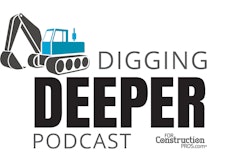
For some of our readers, dealing with the sales side of construction is a daily challenge, especially when customers state objections to buying the services from the contractor. Sooner or later most contractors, who are not shy in their estimating and desirous of making some money, will hear some of the following objections from customers at the point of sale:
- “Gosh, I didn’t think it costs this much.”
- “Ok, is there any sort of discount if I pay cash?”
- “Well, guess I’ll need to wait ‘till next year.”
- “I’m still waiting on some other estimates.”
- “That’s quite a bit higher than I thought it would be.”
Every one of these comments from customers can be code for “you’re too high!” So, how do you overcome this most obvious of objections? Let me share a few techniques that might assist you. Remember, it’s good to have a customer object to your pricing; better they sound off rather than not say anything and simply go somewhere else to get their work completed.
Put cost comparisons in perspective
When a customer responds with, “You’re bid is too high,” try the following response; remember to be respectful.
“Mr. Jones, I noticed that you drive a newer model Chevrolet Impala. I love comparing the difference in car prices from one year to another. Did you know that an Impala in 1987 cost about $13,500? When I checked on a late model Impala I found that the price is now about $26,000 with a few simple bells and whistles on it.”
While I really want to say, “Look, Mr. Knucklehead, everything in life costs more than it did in the past, and you know it. “ Of course I wouldn’t say this to his face…but I’d think it!
One clever client of mine actually created a few marketing pieces that show two different car models; one is the Cadillac and the other is the Taurus. Beneath each car model he places the purchase price for that car in that year. He actually uses this early in his relationship building to “soften the underbelly” of the customer so the customer isn’t so price shocked when he receives the estimate for the proposed work.
Some customers think they know more about construction than any contractor alive. Fewer customers know anything about the actual work specialty that will be provided. And still fewer customers have a clue as to what materials, labor, equipment, etc., cost today. Don’t get defensive when customers hit you with, “You’re too high.” Take the offense!
Before moving to the next technique, remember that while you might find that certain mark-up values might not land work in one area of your market, don’t give in too quickly before reminding customers as to what they’re paying for other services and products.
Repositioning customer’s comparing your bid to your competitor’s cheaper bid
I’ve had clients who have shared with me that a customer will actually tell them something like, “Your bid is $10,000 more than the other two I received. Why are you so expensive?”
Hey, don’t let this question put you back on your heels. Respond to them with something like:
“Well, before I address this, let me ask you Mr. Jones, Why do you think they are $10,000 ‘cheaper’ than my bid?
Let me share with you why they can afford to be ‘cheaper’ than my bid. They talk quality but I give you a warranty.
They talk about quality craftsmanship, but my guys have a combined 75 years of expertise, and we take you on a pre-start jobsite walk, a mid-completion jobsite walk and a post-job walk, taking pictures all along the way for your benefit.
They talk about great customer service, but we provide you with a work schedule before we start and confirm each completion point through the end of the project.
And, they talk about safety, but my guys are certified for 20 hours of safety training with a recognized safety association.”
“Come on, man!” How much more impressed will the customer be with your response to why you and your company is worth hiring? Keep one final thought in mind here: most contractors know enough not to argue with a customer. But this doesn’t mean we should put our tail between our legs and walk away without a credible, and respectful response.
This second point is less about arguing and more about defining the “unique selling proposition” of your company and how you are different from your competitors. You need to be quick, smooth and calm explaining those items that make you different — and therefore better — than your competition.
Always respond professionally when a customer is throwing you against your competition, and always use the word “cheaper” when directing your customer to go back and consider why the competitor is lower than you. Competitors are always “cheaper” and we’re always quality priced, cost-effectively priced and ensure greater return on investment.
Explaining estimates…line by line
Another technique you need to learn to leverage is how to explain line item reasons found in your estimate. A customer who shows a bit of “sticker shock” on his face — but is still interested in reviewing some of the individual costs that contribute to that shock — is letting you know he’s interested in giving you the job. He’s providing you the opportunity to win them over.
Here are a few easy tips to keep in mind when explaining your estimate…line by line:
- First, set the context for your effort by giving the customer a broad picture — prints, drawings, pictures, walk the site, etc. — of your considerations in putting the estimate together.
- Purposely draw attention to the more visible areas of your estimate that might be more complicated or expensive.
- Have samples of materials available, if possible, that are included in your bid. Even have the cheaper grade of materials, if possible, to separate what you bid versus what the competitors probably bid.
- Provide testimonials or examples of your workers’ superiority of craftsmanship when explaining labor costs (if you get that detailed in your presentation). You don’t want to shy away from talking about your workers, but be sure to inform the customer about your crews’ knowledge, focus and attention, and safety record.
I recognize that this technique is not done a lot by most contractors — some because the customer doesn’t ask for a breakdown and some because the contractor might want to avoid doing this at all cost. However, one thing that a growing number of contractors are realizing is that customers, especially those who are interested in buying your services, simply want more information about what they’re spending their money buying.
For the large specialty contractor or the general contractor, this is quite common. In fact, many of these same contractors have to share what their profit margin is by the conditions of the contract.
Present cost savings for now versus waiting
Similar to the cost differences between a 1984 Taurus and a 2014 Taurus, it’s a good rule of thumb to include a “future projected cost” if the customer waits another year or more to get the work done.
When a customer is barking about the price you gave him be sure to invite him to “my world” by sharing how material, equipment and labor costs have trended over the past 10 to 15 years.
One organization I know intimately, and use myself, is the Center for Construction Innovation and Development (CCID). This research group is regularly assessing trends reflecting labor, energy, materials, etc., and what sort of costs and availability will be provided for contractors in the future. For some areas of a contractor’s costs, the picture for the next few years is not good.
Informing a customer that waiting another year or so to have their work completed will cost them an additional 3 percent to 5 percent might not mean much to them at first, but let that reality set in their hearts and minds. Give them a “bone” to place a deposit with you now to not incur the wrath of escalating costs…just be careful not to hurt yourself either.
In summary, don’t let the customers’ questioning your estimates unnerve you. As I wrote earlier, just the fact that they are bringing this paper-thin objection up in the first place is a sign that they at least are interested in you, your message of quality, results, etc. In many situations, such objections are just “foreplay” to being converted to your estimate and deciding to work with you.
So, the next time a customer squawks about your price, stay calm and collected and push back that you’d like to hear his opinion on why your competitor’s bid is so cheap. “What are they hiding from you that you won’t find out till after they begin the work?” Oh boy, that will get them to thinking!
Here’s to selling your work…high!
Brad Humphrey
© Brad Humphrey, Pinnacle Development Group/The Contractor’s Best Friend™




















